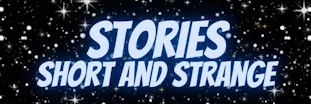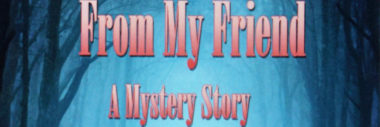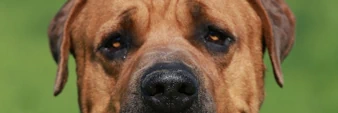Stories Short and Strange
17 short stories for general audiences ranging from the unusual to the unbelievable to the just plain strange.


17 short stories for general audiences ranging from the unusual to the unbelievable to the just plain strange.

Jim Jenkins is an ace detective who solves the most difficult crimes. Yet he always works alone. Or does he?

“He followed me home, Mom, can I keep him?” Why do we each seem to know what the other is thinking? ... Anyone wishing for an adult PAW Patrol will love this!
My first trip to mainland China made me curious as to what I might find. After all, this country was supposed to be one of our Cold War enemies. How much has really changed? Unfortunately, I only spent a few days in Beijing. But even that was instructive — a lot has changed. The Chinese
I haven’t written anything lately because I’ve been traveling again. I’ve just completed a very satisfying two-week trip to China and Bhutan. (Before you ask, Bhutan is a Buddhist country between China and India, east of Nepal.) I didn’t get to see much of China this time, just Beijing and a part of the Great
Stop me if you’ve heard this before, but on April 20, 2016, I wrote “A Simple Way to Feed The World.” Based on a National Geographic magazine cover story of March 2016 (https://www.nationalgeographic.com/magazine/2016/03/global-food-waste-statistics/ ), “Too Good To Waste: How Ugly Food Can Help Feed the Planet,” it discussed the challenges of having two billion more
This is a previously unpublished poem I dug out of my files. In The Unlikely Event… In the unlikely event of loss of cabin pressure, a mask will drop down. Of fire, head for the nearest exit and do not use the elevator. Of an earthquake, go outside, away from buildings. In the unlikely
Maybe I’ve spent too much time around teenage boys, but an April 6, 2018 podcast segment of the NPR program Science Friday got my attention — an interview with Nick Caruso and Dani Rabaiotti, authors of Does It Fart? The Definitive Field Guide to Animal Flatulence. Yes, this is serious science. Specifically, it’s called “flatology” —
Recently, I’ve been working with two women who are expecting babies this summer, and naturally part of the conversation always involves baby names. Which is why a recent article caught my eye — New Zealand has forbidden 21 baby names. Is this a good idea? New Zealand is one of many countries that have some
Something else you might have wondered about in your spare time — how do large flocks of birds seem to move in perfect synchronization? Are they following a leader? No, the reaction time would simply be too short. The best explanation is what scientists call a “maneuver wave.” Wayne Potts, a zoologist who published in
Something I heard on the radio today — the world’s oldest spider’s death has been announced. The exact date is unknown, but it was sometime in 2016. Known to science as Number 16, this female trapdoor tarantula somehow lived an incredible 43 years. Its home was in Western Australia’s Central Wheatbelt region and it should’ve
With all the heat about illegal immigration, it’s refreshing to find an occasional point of light. One such point (three points, actually) is the “Border Trilogy”, a series of three podcasts from National Public Radio’s Radiolab. It goes a long way toward explaining how we got to where we are today, including a court case
If you grew up with Play-Doh, you might be surprised to learn about its original purpose — it was invented as a wallpaper cleaner. In an earlier time, coal was the preferred home-heating method. But burning coal produces soot, which sticks to wallpaper. So Kroger was looking for a product that would clean wallpaper. In